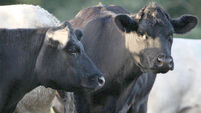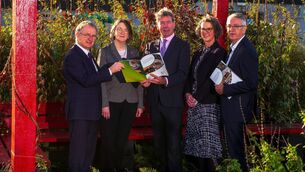New Futures: helping farmers to see the big picture
In a presentation to the Oireachtas Joint Committee on Agriculture and Food, representatives of the New Futures Group in Tipperary told how the 20 farmer participants have grown and developed, taking up opportunities which the programme helped them to recognise.
Farmer Paddy Stapleton told how the new futures programme helped him. “Like all farmers, I am experiencing decreased income and longer hours trying to make something work that is not inclined to do so. If one adds a dash of isolation, frustration and much self-doubt into the mix, one has a very potent cocktail which can erode belief in one’s self.”
“I reached out to the new futures programme and found the one-to-one counselling very challenging. I could only see matters in a farming context and had no view of the wider world. The programme has taken me back to the time before I became a farmer, helped me to appreciate the talents I use, and challenged me as regards using those talents outside farming as well.”
“I started some computer courses, which is something I thought I would never do. I moved the farm into forestry, something which was almost taboo in our area. It has taken courage to do these things, even though they might sound very simple.”
A similar programme in Co Laois had about 250 participants over three years, by which time more than 100 participants had progressed to courses or off-farm jobs. A new course is about to start in Wexford, and the crossroads programme and smallholder scheme in Co Offaly, and Tuatha Chiarrai’s Management Development Course are similar.
Explaining how such courses work, Bridget Kirwan of Tipperary Institute said, “The experience in industry has been that training on its own does not work. Allied with coaching, however, it does work. We are bringing the experience of industry into agriculture.”
“The statistics show declining farming numbers, lower incomes and higher dependence on subsidies as well as increasing isolation. The programme is trying to address the personal stories behind these statistics. People suggest to the farmer that he or she should make changes. No one says how these changes should be made, however, and that is what is different about this programme. It is a programme that helps people to make change.”













